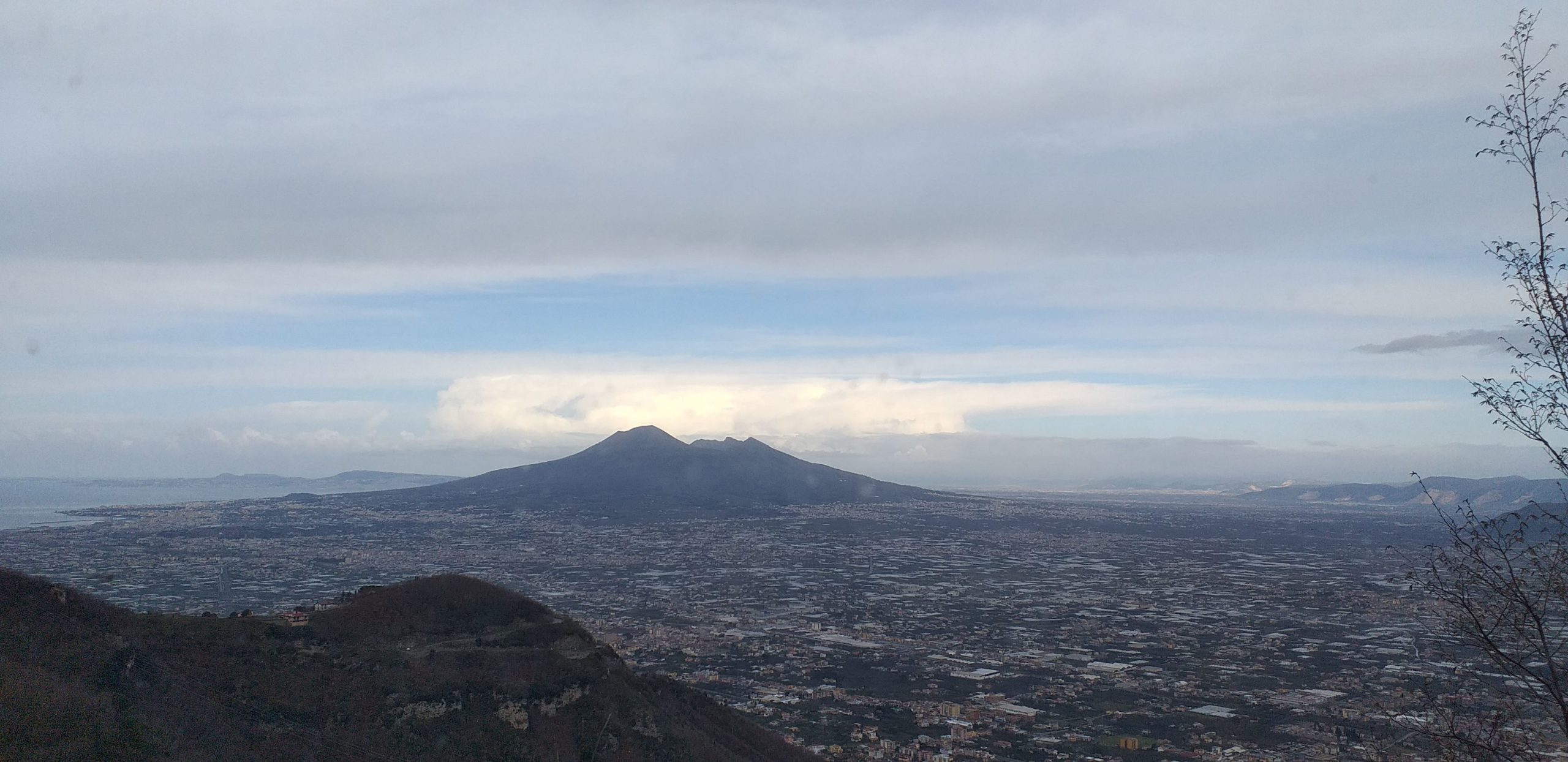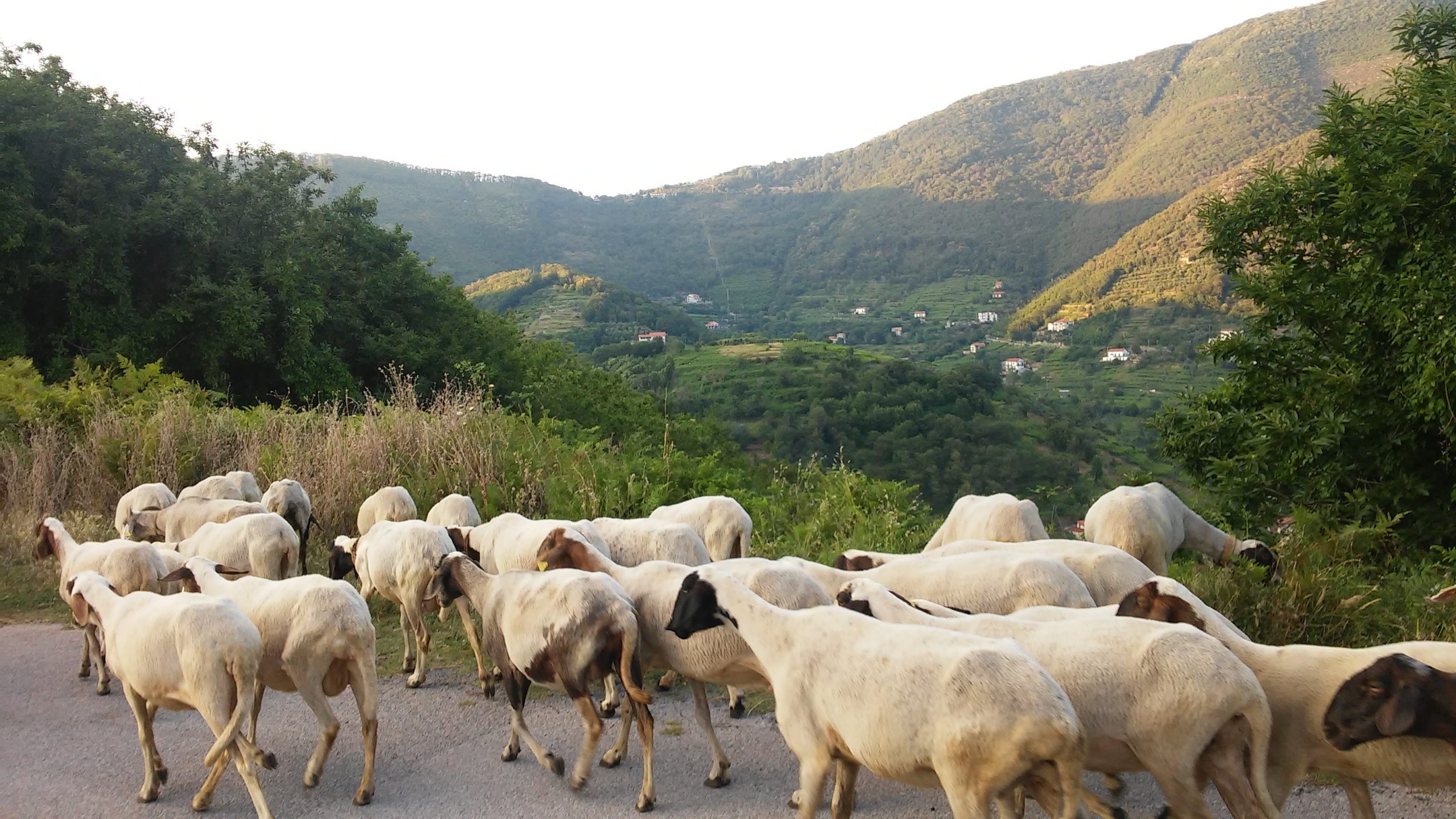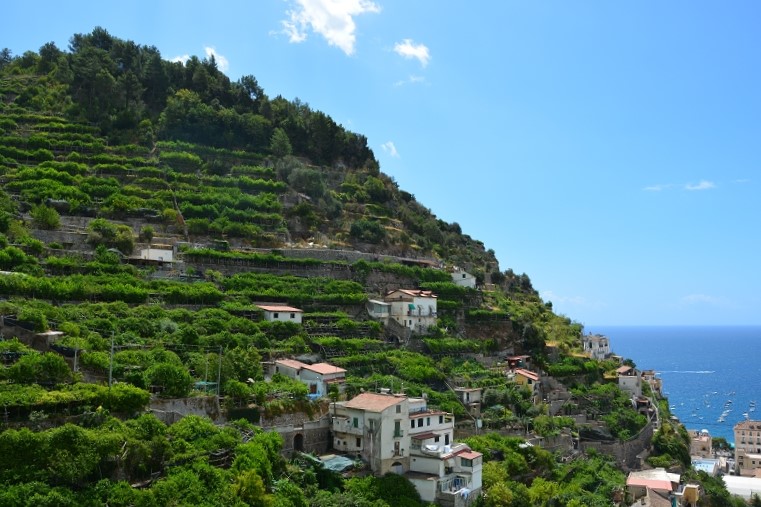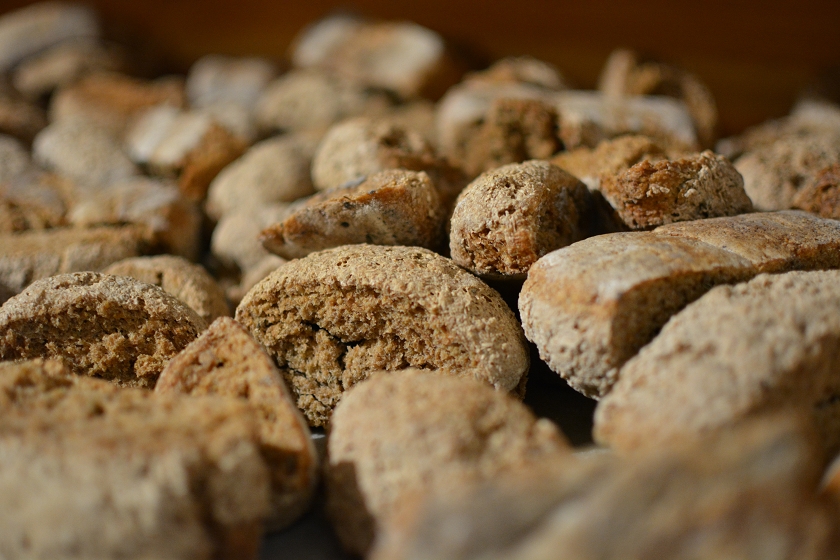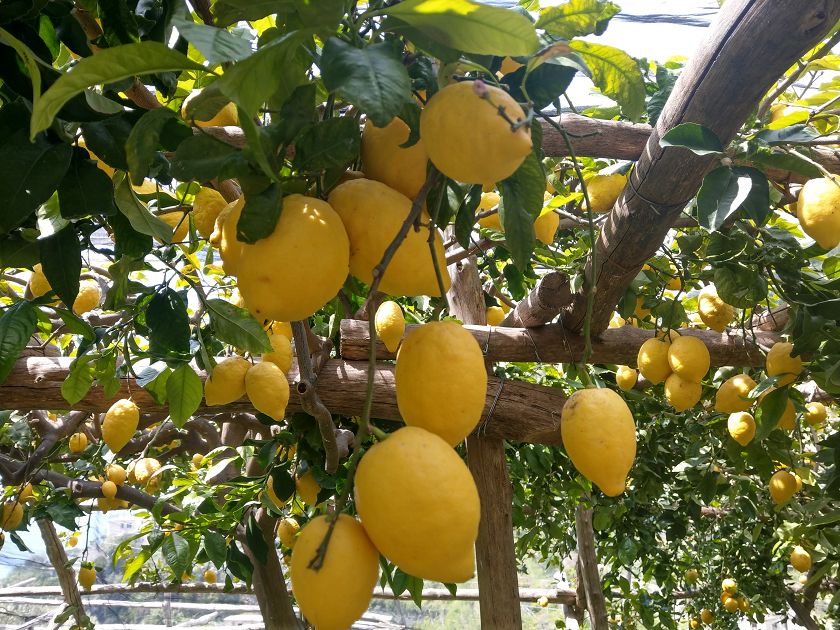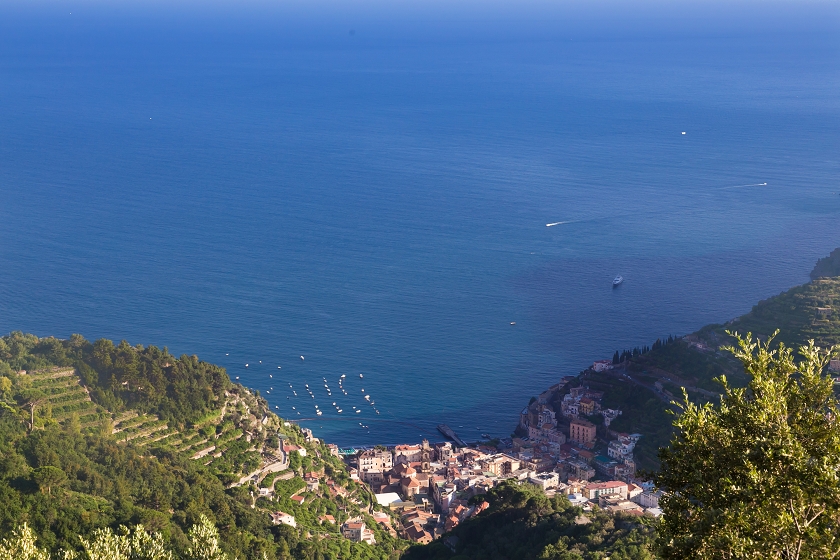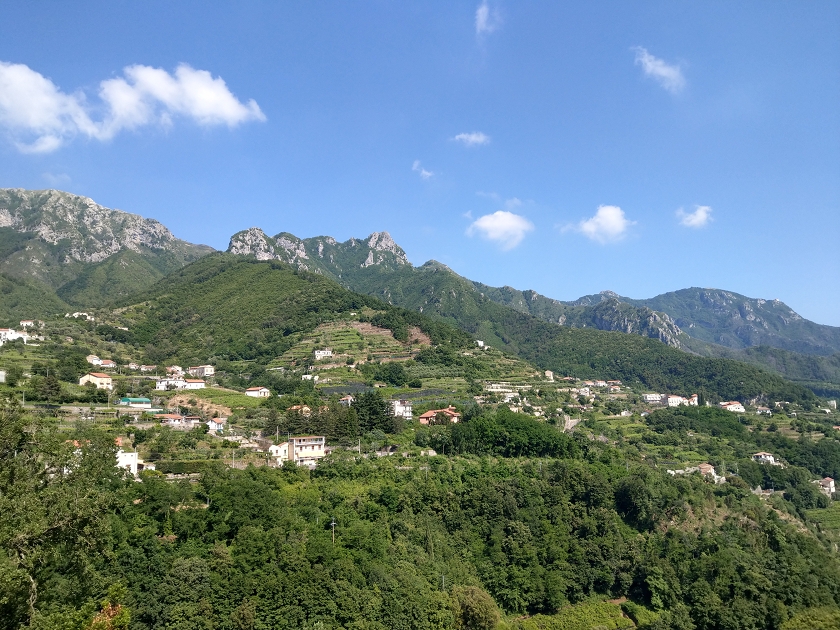There is a legend about the creation of the Amalfi Coast which goes back to the 8th century BC and comes from Homer’s Odyssey (Lat.: Ulysses): Odysseus, a hero of the Greek mythology and king of the Greek island Ithaka, while sailing near the bay, heard the beautiful song of the sirens, to which he could not resist. He ordered his crew to plug their ears to not hear the singing and had himself tied to the mast oh the ship. Like that, he became the first one to survive the hearing of the sirens’ song. The Gods of Olympus though, underestimating Ulysses’ cleverness, flew down to Earth to prevent him from becoming shipwreck. But in order to land on the ship, they landed on the pristine coast instead, churning up the rocks and creating the rugged cliffs of today’s Amalfi Coast.
Another less known legend from around 1300 BC is the one of Orpheus, a singer of the Greek mythology, accompanying the Argonauts while sailing along the coast. While the Argonauts where tempted by the sirens’ song, Orpheus just outsang the sirens and thus dispelled their powers, which brought them to throw themselves into the water and be transformed into the three small islands on the coast. But the original sirens were not like we imagine them today, a beautiful woman with a fish tail. Back in the days, sirens had the body of a bird and the head of a beautiful woman (or sometimes, the other way round). This also explains the name of the islands, which is Li Galli (The Roosters).
ROMAN EPOCHE
Real historic evidence is more difficult to reconstruct due to Mount Vesuvius’ eruption in 79 AD, destroying everything around, including Pompeii and Herculaneum, that are famous touristic sites today. Various sites of human population have though been confirmed for the time span going from prehistory to roman times.
In Minori, the first populated site at the Amalfi Coast, is still remaining an ancient Villa Romana, built in the 1st century AD. This and other villas were used by Patricians as vacation houses, while the interior of the region was used for cultivation. Vesuvius’ eruption destroyed not only all the area and led to landslides, covering the Rilla Romana and lots of infrastructure in mud, but its vulcanic deposits sedimenting on the territory also had a good impact on the soil, making it very fertile.
On the other side of the mountains lies Nocera, which originated from Nuceria Alfaterna, a very important ancient city lying in the same agglomeration as Pompeii. It has its origins in the VI century BC, around the same time that Pompeii was built and was a very important commercial city. In 216 BC, it was plundered by the Carthaginian general Hannibal but was then rebuilt by the emperor Augustus. Only in 42 AD it became part of the Roman colony, though still preserving the Greek language. Later, Neapolitan derived out of a mix of Vulgar Latin and Greek, but it also has some influences from Spanish and French. The
EARLY TRAMONTI
In medieval times, the Amalfi Coast was constructed out of civitates and terrae, cities and lands. Tramonti consisted of 14 dispersed farms – except for one that is today only a ruin, these became today’s 13 districts of the community. Its original name was Transmonti, meaning “between the mountains”. Between 500-550 AD, roman populations were found settling between the Monti Lattari, the forested mountains where Tramonti lies in between. Their name which translates to “Milky Mountains” was given by the Romans due to the milk production like the many cheese varieties coming from the high number of goats and sheep that were held here.
THE REPUBLIC OF AMALFI – ONE OF THE MAJOR ITALIAN MARITIME REPUBLICS OF THE MIDDLE AGE
From the 6th century, Amalfi became a major seafaring power thanks to its trading with grain, timber, salt and slaves from the interior. The wood came from Tramonti, disposing of a large number of forests. Until then, the area was one of the rare ones whose forests had not been exploited yet. Most of the Mediterranean had already been deforested from the Romans and was probably one of the main causes of the fall of the Roman Empire. After that first big deforestation, another one took place after the Middle Ages, until around 1700 when populations started to realize the unsustainable outcomes resulting from too less forests.
In exchange of their export products, Amalfi’s nobles received gold dinars from Egyptian and Syrian mines, with which it bought the Byzantine empire’s silks that it resold in the West. While most of Italy’s economic system still worked with exchanging goods in the 9th century, Amalfitans used gold coins. During that time, Tramonti was characterized not only by forests, but also by agriculture, used to cultivate wine (which had been introduced by the Romans), fruits and vegetables.
Later, the coastline became property of the Duchy of Naples, until Amalfi declared its independence in 839. In 1077, it was incorporated in the Norman Kingdom, where it rose to influence and wealth due to its active trade with the Orient. Being a major sea power, Amalfi got into conflict with Pisa, Genoa and other neighbours. Also, its wealth attracted pirates, who the army could rout instantly. After a long series of attacks, it was annexed to the Kingdom of Sicily in 1131, though still retaining a certain autonomy in managing maritime commercial affairs.
LATE MIDDLE AGE – THE CONSTRUCTION OF THE TERRACES
While in the medieval times, the fields mainly belonged to clergymen and monks, as well as to the nobility, in the XI century, some farmers could buy vineyards and forests due to commercial relations with Puglia, which rose their financial status.
The transformation to terraced landscapes took place mainly in the 12th and 13th century, initiated by monasteries. The Duchy of Amalfi was able to make huge investments in this development. Besides growing various plants, the monasteries also brewed beer and created culinary products like the Neapolitan Sfogliatella, a pastry that is very known today. During that time, the coast still missed accessibility. Until the 1800s, accessibility from one part to another was only possible by mule. Thus, the region’s traditions and products were preserved better than in other zones that were already globalized.
Thanks to its position, Tramonti became an important defensive force throughout the centuries. This did though not suffice to prevent the Pisans’ various attacks. These, together with natural disasters like a tsunami in 1343 as well as epidemics like pest and cholera in the 17th century, diminished the coastal population and made the area poorer over the centuries.
THE STORY OF THE PIZZA OF TRAMONTI
But Tramonti had also another function: It provided dehydrated bread for the sailors that could be stored for months on the sea and eaten after dipping it into some sea water. For baking it, the oven has to cool down, so to not lose the heat, the bakers prepared a dough consisting of rye, millet and barley flavoured with spices and lard in order to be consumed freshly. This was the origin of today’s pizza. As trades with Napoli began to grow at the end of the 15th century, their recipes got exported to there. It became very common to make that kind of bread that is today known as pizza, nearly every family had their own oven and prepared it.
So the Pizza became popular and developed, and around 200-300 later, tomatoes were added, especially the Fiascone tomato which was very common at that time, as well as olive oil, garlic, oregano and lard. Sometimes they also added salt and homemade cheese which was similar to mozzarella. Every family had cows back then, which made it easy to make their own cheese. Mozzarella was also one of the main ingredients, together with basil and Re Fiascone tomato, that constituted the world-famous Pizza Margherita dedicated to the Queen of Italy in 1889. In the year 1955, the Tramontain Luigi Giordano exported mozzarella and finally pizza to Northern Italy. His success brought nearly half of the population to follow him and open pizzerias in the North.
But not only the products, also stories about the Amalfi Coast’s beauty started to spread in the north. The economy had been based on farming and on the crafts industry. The unique landscapes, filled with vines, olives, lemon trees and more attracted a lot of young men from the upper class that were travelling through Europe in the time between 1700-1900. Goethe, who came to Italy in the years 1786-1788, wrote about “the land where the lemon-trees blossom”. But Praiano, Positano and Capri as spaces for culture and art also attracted many more poets, artists and musicians. The coast became also a refuge for artists during fascist times and communist Russia. Jewish migrants settled on Capri. But also students and professors came to Italy to learn about medicine, transporting the knowledge to northern Europe. Through their commercial relations with African countries, southern Italy served as a front gate not only to medical, mathematical and philosophical knowledge, but also to inventions like paper and the compass. Culinary products like coffee, sugar and tropical fruits were imported from Arab countries to Italy and from there exported to the North.
GLOBALIZATION AND TOURISM
Thanks to the growing tourism sector, the Amalfi Coast resurrected in the second half of the 19th century.
In 1997, the territory was declared a UNESCO world heritage site because of its terraced landscape. But not only the UNESCO realized its uniqueness, also tourists did. The Amalfi Coast became a famous and well-visited area, appreciated for its picturesque landscape. By now, tourism is the strongest economic sector on the coast and substituted agriculture as main income. There are many tourists coming to the coast between Spring and Autumn.
Few people know that the region consists not only of coast, but also of rural areas like Tramonti, where traditions and culture are still very well preserved. Through its activities, ACARBIO promotes the cultural and natural heritage, especially in the upper towns along the valley and the mountains. Our aim is to initiate sustainable touristic activities that are benefiting the families and farmers who are still cultivating this territory. That means inviting people to look further the mainstream coastal attractions and discover the rural area around that still has some preserved landscapes and ancient know-how about the agriculture, as well as lots of beautiful paths to walk while listening to birds singing all day long.
If you want to read more about the history, here are some sources for further information:
http://www.naplesldm.com/amalfi.php
https://www.nationalgeographic.com/travel/world-heritage/amalfi-coast-italy/
What to visit in Tramonti:
https://www.amalficoast.com/l/campania-4/amalfi-coast-1/tramonti-11
Some more history in Italian:
Books about the Amalfi Coast’s history:
Tramonti la terra operosa – Casali, pievi, uomini e poderi: le matrici della vita rurale in Costa d’Amalfi. Centro di cultura e storia amalfitana, 2008.
Gargano G. La città davanti al mare: aree urbane e storie sommerse di Amalfi nel Medioevo. Centro di cultura e storia Amalfitana, 1992.
Gargano G. La nobiltà aristocratica amalfitana al tempo della Repubblica indipendente (839- 1131). Rassegna del Centro di Cultura e Storia Amalfitana, 2005.
D’Antonio N. Campania. Le città del vino. Ci.Vin, 2007.
Séraphine-Noëlle Reeg * studying Tourism and Sustainability at the University of Montpellier, France


